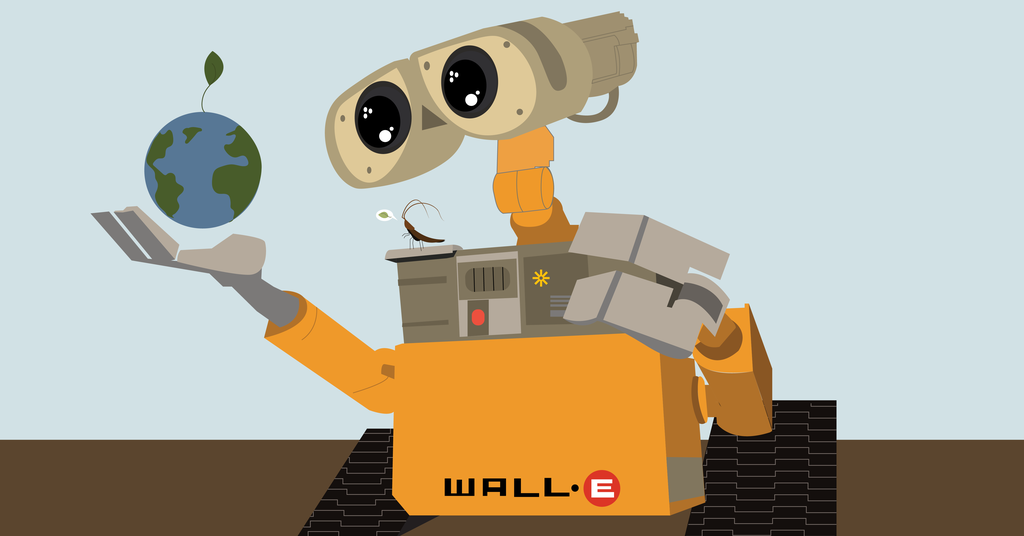The call to climate action in WALL·E
Looking back at a Disney and Pixar classic that has reshaped the ways we think about our environment.
Directed by Andrew Stanton in 2008, WALL·E is a film to remember for its simple yet impactful message. Our favourite little robot urges people across the globe to look inward and pay attention to the lack of respect we have for our environment. It is baffling to see that, fourteen years after the movie’s release, our climate might be in an even worst spot.
Taking place in the year 2805, the film follows a trash-compacting robot named WALL·E, otherwise known as a “Waste Allocation Load-Lifter: Earth-Class.” He is the last of his kind left on Earth—a once beautiful climate now turned to a wasteland. WALL·E’s job is to clean up the messes left on the planet by mega-corporations.
Stanton depicts corporations as evil entities with positive aspects. In the movie, “Buy n Large” is a mega-business that helps humans “temporarily” evacuate from Earth. They provide humanity with a starship named the “AXIOM,” allowing them to seek refuge in space. The trash-compacting robots are left on Earth to try to make it habitable once again, even though “Buy n Large” is a huge contributor the tragic state that this fictional Earth is in. WALL·E is the last robot left, and it is clear that the clean-up mission has not progressed according to initial expectations. As such, “AXIOM” becomes the new permanent home for humans, where they have every single one of their needs catered to by robots on the ship. This proves to be an issue, as the population slides into helpless obesity.
As WALL·E continues to try and clean up Earth bit by bit, he meets EVE, an “Extraterrestrial Vegetation Evaluator.” EVE is sent from a starship to scan Earth for any signs of life. WALL·E, excited to have found a friend, takes the chance to show EVE everything he has collected over the years—including a healthy, growing plant. This finding sends EVE into standby mode and alerts the starship to pick her back up from Earth. Realizing that Earth is indeed able to sustain life after all, WALL·E and EVE stop at nothing to bring everyone from the starship back home.
It is not far-fetched to say that this film is borderline perfect in every way. It is another one of the many collaborations between Pixar Animation Studios and Walt Disney Pictures, and it yet again highlights the best aspects of each production company. While the plot is uplifting, WALL·E highlights the dangers that come with refusing to take action on environmental issues.
According to NASA, Earth continues to progress toward “a long-term warming trend due to human activities.” The planet’s surface temperature consistently breaks new records, with each year being hotter than the last. Billionaires can continue to deny the existence of climate change, but the facts are visible. Change is needed, and that change needs to happen now.
We as a population must do everything in our power to make this world a safer place— not only for ourselves, but for the people around us. As WALL·E reinforces, all we truly have is each other.
Photos Editor (Volume 50) — Daanish is wrapping up his final year at UTM, majoring in Technology, Coding & Society, and minoring in Mathematics and Cinema Studies. He's aware of how odd that combination is, but that is enough to describe him in a nutshell. Carrying his cameras wherever he goes, you can find Daanish furiously writing Letterboxd reviews, cheering on the Maple Leafs, and blasting the Jonas Brothers any chance he gets.


